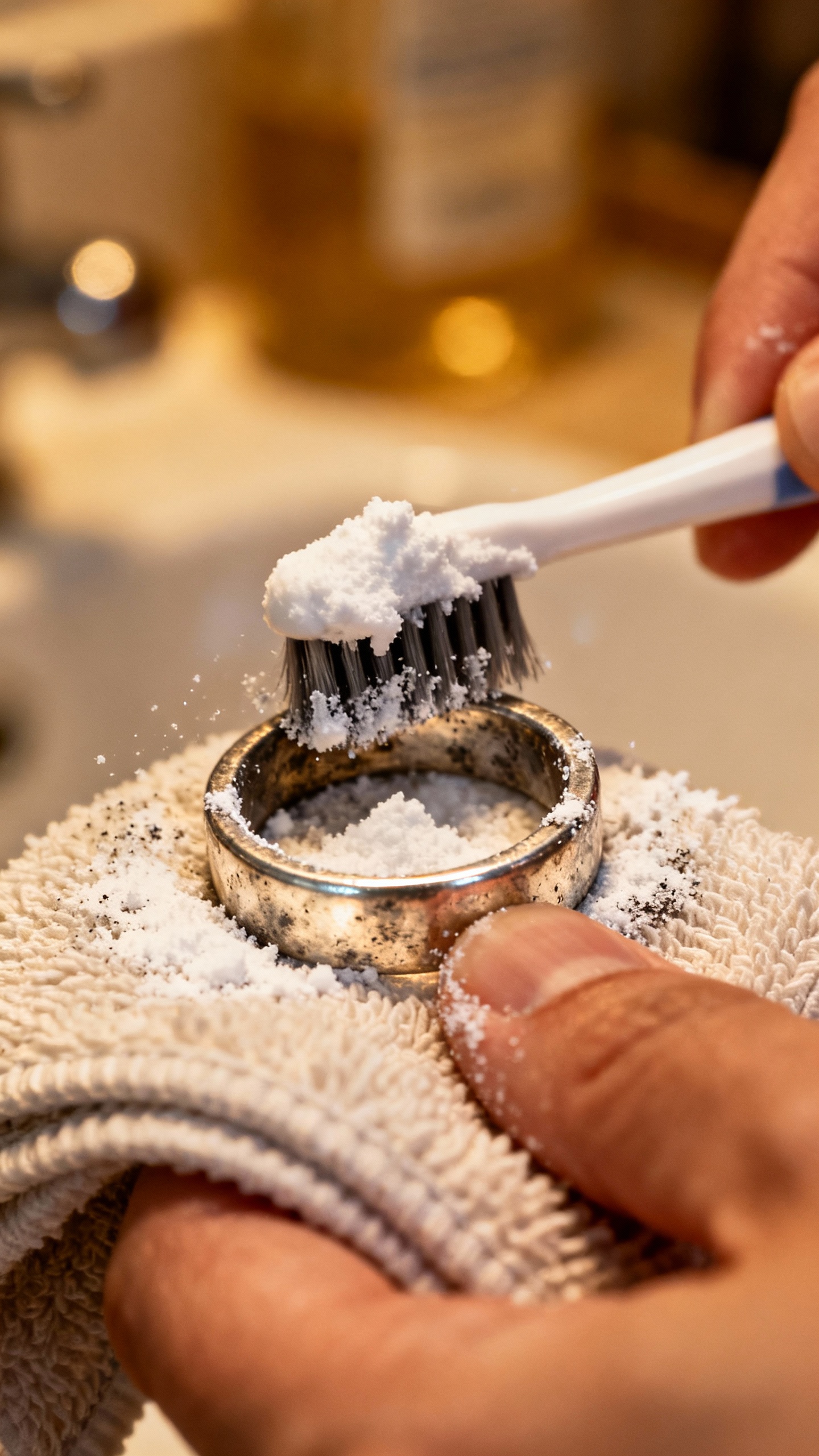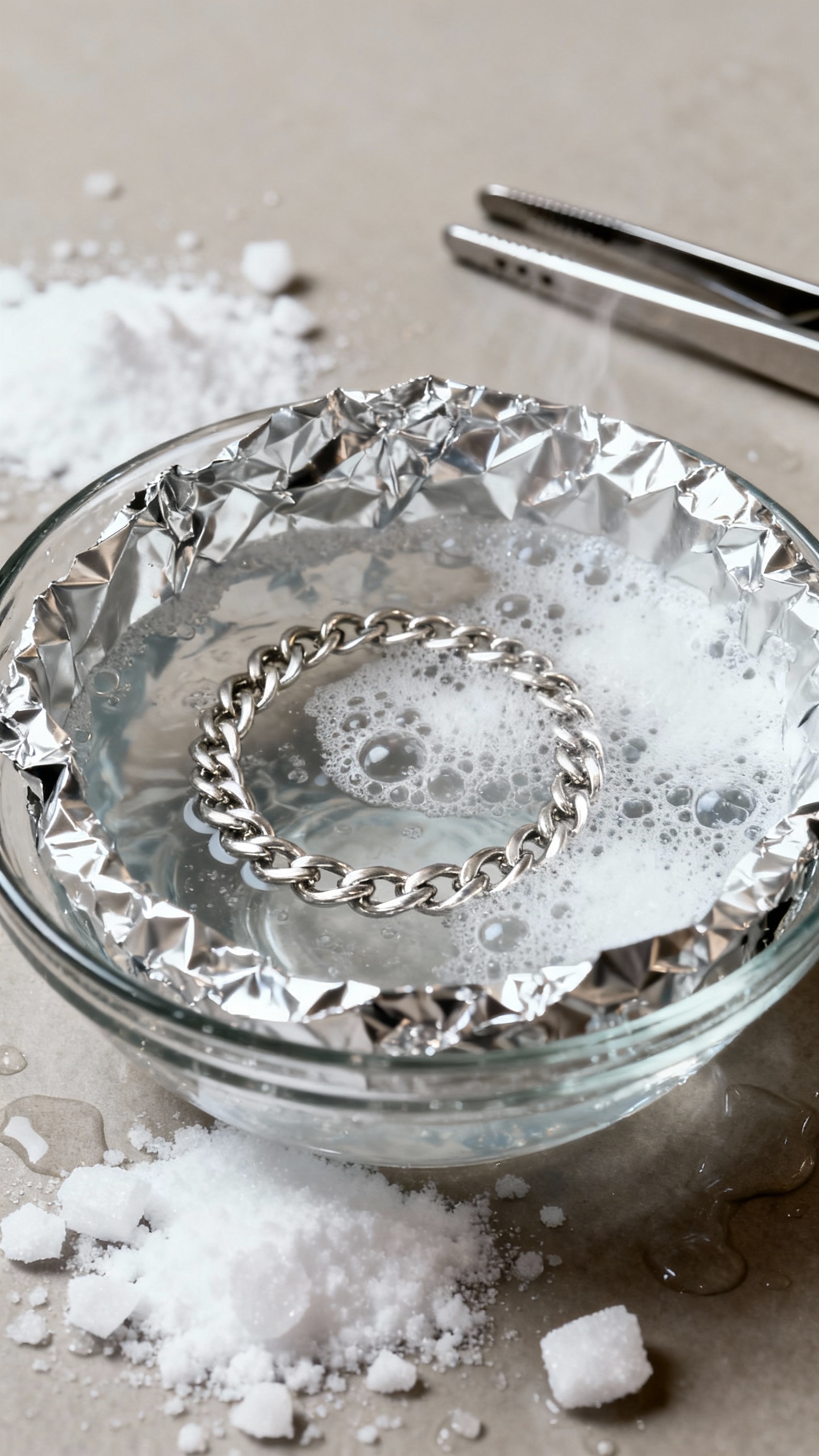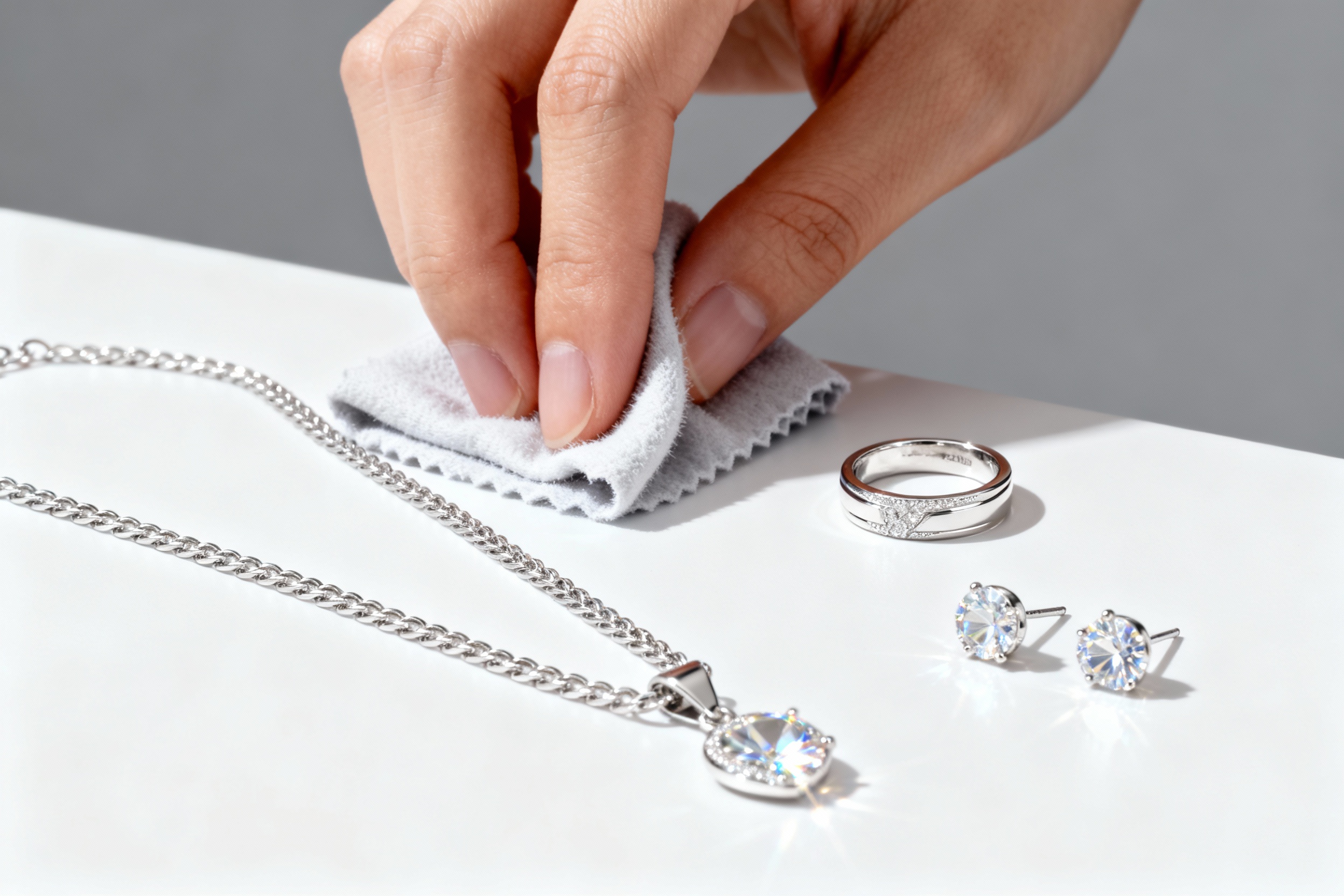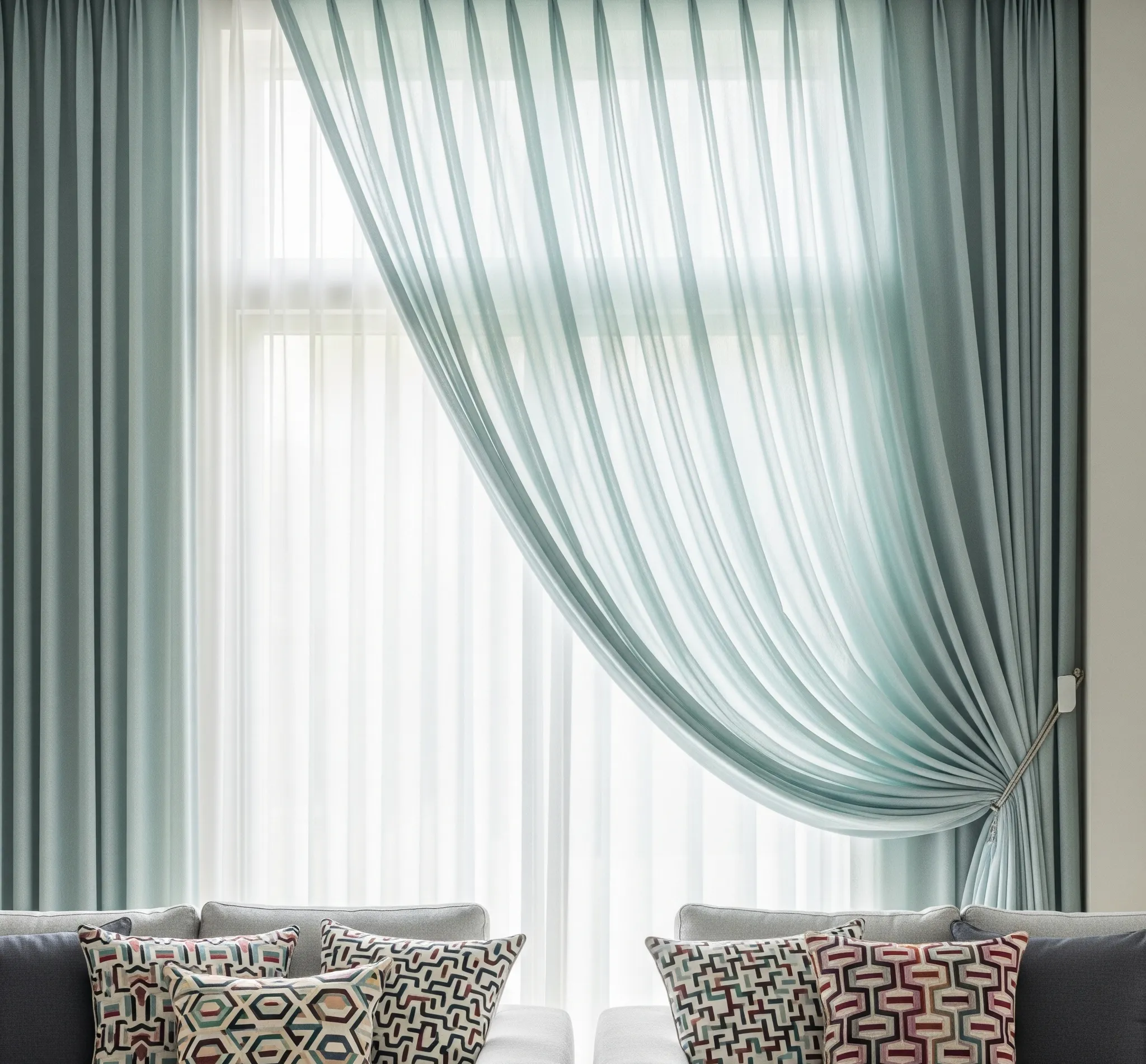Your silver jewelry used to shine like a star, and now it looks like it fell asleep in a drawer for five years. Tarnish happens. Good news: you can bring that sparkle back fast with stuff you already own.
Even better news: you don’t need fancy tools or a chemistry degree—just a little know-how and a few smart moves.
Why Silver Tarnishes (And Why That’s Not the End)

Silver doesn’t rust, but it does react with sulfur in the air to form tarnish. That dull gray layer? Totally normal.
It looks scary, but it sits on top of the metal. You just remove it and boom—shine again. FYI: Sterling silver (92.5% silver, 7.5% other metals like copper) tarnishes faster than pure silver because copper joins the party.
Doesn’t mean it’s bad—just needs more TLC.
Before You Start: Check Stones, Plating, and Finishes
Not all jewelry wants the same spa day. You need to know what you’re cleaning, or you might do more harm than good.
- Stones present? Porous gems like opal, pearl, turquoise, lapis, and malachite hate chemicals and soaking. Keep it gentle.
- Plated or solid? Silver-plated pieces can lose plating if you scrub too hard.
Go light.
- Oxidized details? Some pieces have intentional dark areas for contrast. Don’t strip those with aggressive polishing or dips.
IMO, if you’re unsure, treat it like it’s delicate. You can always level up the cleaning.
Fixing over-cleaning? Not so easy.

Method 1: The Quick Soap-and-Water Reset
When your silver looks dull but not completely tragic, start basic.
What you need
- Warm water
- Mild dish soap (a drop or two)
- Soft toothbrush or microfiber cloth
- Soft towel
How to do it
- Mix a small bowl of warm water with a tiny bit of soap.
- Dip the brush or cloth and gently scrub the surface and crevices.
- Rinse under clean water thoroughly.
- Pat dry, then buff gently with a microfiber cloth.
Pro tip: Dry completely. Trapped moisture invites tarnish right back.
Method 2: Baking Soda Paste for Stubborn Tarnish
This works great for solid sterling silver with no delicate stones.
It’s effective and cheap—aka the dream combo.
What you need
- Baking soda
- Water
- Soft toothbrush or cotton pad
- Microfiber cloth
How to do it
- Make a paste: 3 parts baking soda to 1 part water.
- Apply gently with the brush or pad. Don’t go Hulk-mode—light circles.
- Rinse very well. Baking soda leaves residue if you rush this.
- Dry and buff until shiny.
Skip this method for plated silver or soft stones.
Baking soda can scratch.
Method 3: Aluminum Foil + Baking Soda Bath (AKA The Science Magic)
When your silver looks like it lost a fight with a high school science lab, try this. It uses a chemical reaction to transfer tarnish off the silver and onto aluminum. Yes, it really works.
What you need
- Aluminum foil
- Glass or ceramic bowl
- Very hot water (not boiling if stones are present)
- Baking soda (about 1 tablespoon per cup of water)
- Tongs or spoon
How to do it
- Line the bowl with foil, shiny side up.
- Place silver on the foil so it touches the metal.
- Sprinkle baking soda over the pieces.
- Pour in hot water to cover.
You’ll smell a faint sulfur odor. That’s tarnish leaving.
- Let it sit 2–5 minutes, then remove with tongs.
- Rinse, dry, and buff.
Heads up: Don’t use this on pieces with glued-in stones or intentionally oxidized areas. And don’t soak pearls or opals—ever.
Method 4: Commercial Silver Polish (When You Need That Mirror Finish)
Sometimes you want pro-level shine with minimal elbow grease.
A quality silver polish does that. It removes tarnish and leaves a protective film that slows future tarnish.
How to choose and use
- Choose a polish made for silver, not general metal.
- Use sparingly. Apply a small amount with a soft cloth, rub lightly, and follow the product directions.
- Avoid dips for jewelry with stones or patina.
Dips can be harsh and strip details fast.
FYI: If you see “no-rinse” wipes or cloths, those work great for regular touch-ups.
Method 5: Toothpaste? Maybe. But Here’s the Real Talk
You’ve heard it: toothpaste cleans silver.
Technically true. Smart? Not always.
- Only use non-gel, non-whitening, non-tartar-control toothpaste.
Those additives can scratch.
- Use a tiny amount and a soft cloth. Rinse very well.
- Better option IMO: use a real silver polish or baking soda paste. Safer and more predictable.
Clean Delicate Stones Without Tears
Your silver pieces with pearls or porous stones need extra care.
Do this instead
- Wipe with a barely damp soft cloth with a little mild soap.
- Avoid soaking, hot water, or harsh chemicals.
- Dry immediately and store separately.
Golden rule: If you’d baby the stone, baby the whole piece.
Make It Last: Storage and Daily Habits
You cleaned it.
Now keep it shiny longer with simple habits.
- Wear it often. Friction from wearing slows tarnish. Love that for us.
- Store in airtight bags with anti-tarnish strips or silica gel packs.
- Keep away from humidity, perfume, lotion, hairspray, chlorine, and rubber bands (sulfur alert).
- Wipe after wearing with a soft cloth to remove skin oils and sweat.
Troubleshooting: When It Still Looks Meh
Sometimes tarnish digs in deep or you’re dealing with scratches, not just discoloration.
- Black tarnish won’t budge? Try the foil+baking soda method, then polish.
- Still dull? You might see fine scratches.
Use a professional jewelry polishing cloth with two sides: cleaner and shine.
- Design features look faded? You probably over-cleaned oxidized areas. A jeweler can re-oxidize.
- Loose stones? Stop cleaning and see a pro. Water and scrubbing can make it worse.
FAQ
How often should I clean silver jewelry?
Lightly wipe pieces after every wear, then do a proper clean every 1–3 months depending on how often you wear them and your environment.
Humidity and sweat speed up tarnish, so adjust accordingly. Regular tiny cleanings beat marathon sessions.
Can I shower with silver jewelry?
You can, but I wouldn’t. Soap scum dulls silver, and shampoo plus conditioner equals residue city.
Pool or hot tub? Hard no—chlorine loves to wreck metal.
What’s the safest method for vintage or heirloom pieces?
Use mild soap and water with a soft cloth first. If it needs more, try a gentle silver polish, sparingly.
When in doubt—especially with unknown stones or finishes—take it to a jeweler for a quick assessment. Better safe than sorry, IMO.
Do anti-tarnish strips actually work?
Yes. They absorb sulfur compounds in the air so your silver doesn’t.
Toss a strip into your jewelry box or storage bag and replace as directed. Pair them with airtight storage for best results.
Is it okay to use ultrasonic cleaners?
For plain silver, usually yes. For stones like pearls, opals, emeralds, or glued settings, absolutely not.
Ultrasonic machines can loosen settings and damage delicate gems. Check the stone type first.
Why does some of my silver turn black faster than others?
Body chemistry varies. Some people’s skin pH, sweat, or lotions speed up tarnish.
Also, pieces with more copper content (i.e., sterling) tarnish faster, and storage conditions matter a lot.
Conclusion
You don’t need a lab or a giant budget to make silver jewelry shine like new. Start gentle, choose the right method for your piece, and finish with smart storage. Do that, and your silver will glow, your photos will pop, and your jewelry will finally get the attention it deserves.
Now go rescue those tarnished treasures—your future self will thank you.


